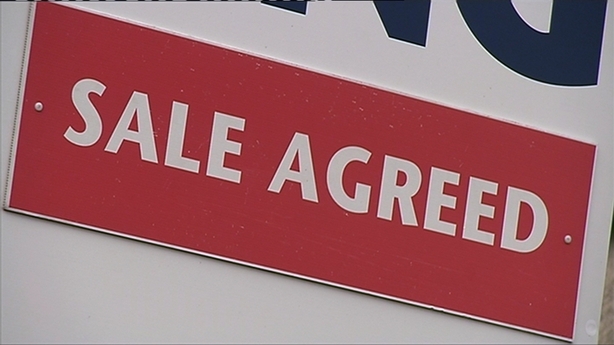Hot on the heels of the CSO, the Fiscal Advisory Council and the Central Bank, the European Commission is the latest organisation to be beset by those pesky Leprechauns, writes RTÉ Economics Correspondent Sean Whelan.
In its latest Winter Economic Forecast, the commission has started to make adjustments to its numbers, particularly for investment, as a result of "Leprechaun Economics" - the 26% growth in GDP reported by Ireland last July for 2015.
This was the result of a collision of the new ESA 2010 standard of national accounts, and the BEPS process for clamping down on tax avoidance, which drove investment "onshore" into Ireland by US multinationals.
The combined effect exacerbated a long-standing problem with Irish GDP numbers overstating the "real" picture of the Irish economy.
Add to this the distorting effects of large inflows into a small economy - such as those from Ireland’s outsized position in aircraft leasing - even the Commission, institutionally committed to a one-size-fits-all view of the European economy, has to run up the white flag when confronted with the Irish numbers.
It is now excluding Irish investment data from its calculations of the aggregates for the EU and Euro Area, in order to "point more clearly to trends in investment".

The reason for excluding the Irish data is exactly the reason behind the quest by the CSO and the Central Bank to come up with alternative measures of the Irish economy that take account of the huge flows from multinationals and aircraft leasing and the volatility in the numbers these flows produce.
It is because of the "huge swings in investment volumes in Ireland" that the Commission has decided to exclude the Irish data.
The differences are so big the Commission can no longer ignore them.
The 2015 figures for Ireland - unveiled by the CSO last July - helped propel EU investment growth of 3.2% in 2015, dropping to 2.8% in 2016.
But by excluding the Irish numbers, the growth trend is reversed - a slight increase from 2.6% in 2015 to 2.7% last year.
This is all driven by a fall in the investment rate in Ireland from a Leprechaun-infested 33% in 2015 to a "mere" 5% last year.
When they take out the Irish data from the quarterly investment numbers, the picture is different again, with a marked slowdown in investment growth in both the EU and the euro area over the past year.
In the latter case the slowdown has been marked, dropping from 1.4% in Q4 2015 to 0% in Q3 2016.

This slowdown is despite the fact that policy has been to squash down interest rates in a deliberate effort to make investment more attractive by reducing finance costs.
The fact this is not happening suggests to the Commission that funding costs are not the main concern of investors right now.
So there is no point in spending more time and effort on reducing funding costs any further.
Indeed the only investment class that has benefited from the flat interest rates (and easier credit terms) has been our old friend house construction, where the growth rate has gone from 2% to 3.2% (3.3% in the euro area).
But these figures also exclude Irish data. And why not - don’t we have a housing shortage and the highest mortgage rates in the euro area?
The growth rate for mortgages was 2.7% in December, the highest figure for the EU since the end of 2011.
House prices have been rising too, with annual growth of 3.4% in Q3 2016 (in Ireland the annual growth rate in house prices was 7.7% in September).
This, the Commission says, is evidence that the period of adjustment in the European Housing sector is ending, driven by residential investment.

But if it’s not the cost of finance that is holding back productive investment, what is it?
Short-run confidence indicators are mostly optimistic, with all indicators exceeding the long-run average.
But those indicators were also optimistic back in the second quarter, and investment continued to decline.
And the latest Commission investment survey pointed to downward revision in investment plans by companies.
Production of capital goods - a good indicator of future equipment investment - has fallen in both the EU and euro area.
The Commission is pointing the finger of blame at three suspects for the investment famine - the high level of corporate and consumer debt in several countries (sadly Ireland is not excluded from this), the moderate outlook for demand in Europe generally, and elevated uncertainty.
And it is this third point that the Commission is focusing on, stating that "uncertainty is rising to an extraordinarily high level".
The drivers are the uncertain outcome of the UK's Brexit negotiations, the upcoming elections in France, Germany, Holland and possibly/probably Italy, and the policy uncertainty in the US (which could be good through a fiscal stimulus, or could be bad from protectionism).
They don't mention the growing disagreement over the Greek debt situation, or the geo-political instability from Syria/ISIS/Russia/China, etc.
But they can't be helping the mood music.
In short it seems that fear of "events" is causing Europe's firms to put off productive investment.
And the more they put off investment, the more they contribute to a permanent weakening of potential growth in Europe.
Which in turn undermines the case for more investment.
It is this bleak outlook for investment that takes the shine off a Winter Forecast that - for the first time since 2008 - says every single state of the Union will record growth this year.
Oh well, at least house prices are going up...






